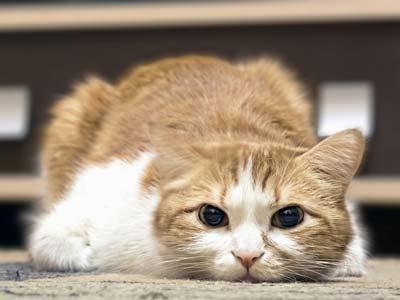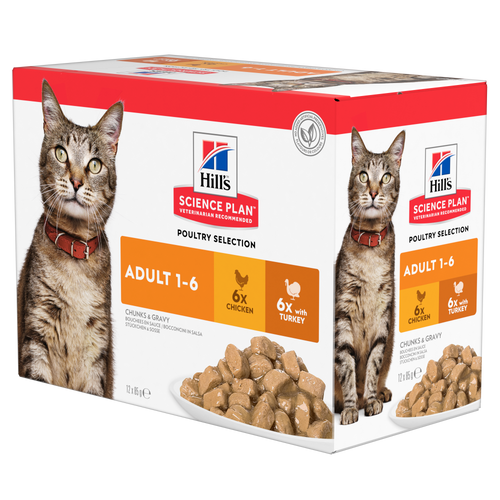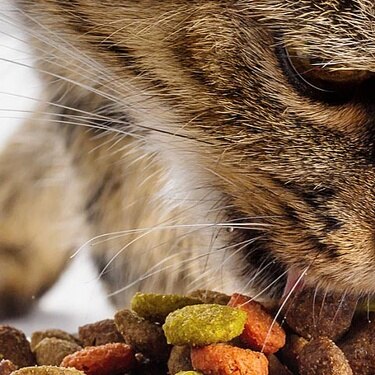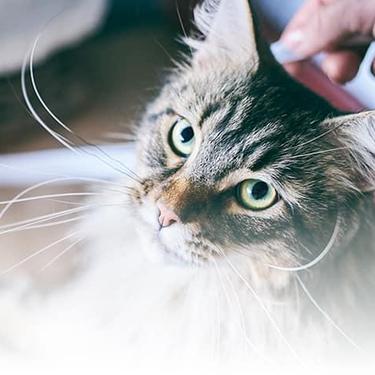
-
Find the right food for your petTake this quiz to see which food may be the best for your furry friend.Find the right food for your petTake this quiz to see which food may be the best for your furry friend.Featured products
 Adult Wet Dog Food with Beef
Adult Wet Dog Food with BeefHill's Science Plan Adult Multipack Wet Dog Food with Chicken, Beef & Turkey are complete premium pet foods for adult dogs from 1 year. Your dog will love these deliciously smooth and savoury minced loaves, formulated for balanced nutrition and overall health.
Shop Now Puppy Food
Puppy FoodHill's Science Plan Puppy Multipack Wet Dog Food with Chicken & Beef are complete premium pet foods for growing puppies from weaning until 1 year old and for pregnant and nursing dogs. Your puppy will love these deliciously smooth and savoury minced loaves, formulated for balanced nutrition and overall health.
Shop Now Mature Adult Dog Food
Mature Adult Dog FoodHill's Science Plan Mature Adult Multipack Wet Dog Food with Chicken & Beef are complete premium pet foods for mature adult dogs from 7 years. Your dog will love these deliciously smooth and savoury minced loaves, formulated to deliver the appropriate amount of energy to support the needs of adult dogs.
Shop NowFeatured products Light Adult Multipack Wet Cat Food with Chicken & Ocean Fish
Light Adult Multipack Wet Cat Food with Chicken & Ocean FishTender chicken chunks in gravy for cats, with L-carnitine and fewer calories for ideal weight management. Packed with high-quality protein, omega-6s, and vitamin E for shiny fur and healthy skin.
Shop Now Adult Multipack Wet Cat Food with Beef, Ocean Fish & Chicken
Adult Multipack Wet Cat Food with Beef, Ocean Fish & ChickenTender chunks in gravy for cats, with high-quality protein to maintain lean muscle. With vitamin E and omega-3s & -6s for healthy skin and balanced minerals to support healthy vital organs.
Shop Now Mature Adult Wet Cat Food with Chicken
Mature Adult Wet Cat Food with Chicken
Tender chicken chunks in gravy for mature adult cats. Made with easy-to-digest ingredients, high-quality protein for lean muscle maintenance and antioxidant vitamins C+E for optimal health.
Shop Now -
Dog
- Dog Tips & Articles
-
Health Category
- Weight
- Food & Environmental Sensitivities
- Urinary
- Digestive
- Joint
- Kidney
-
Life Stage
- Puppy Nutrition
- Adult Nutrition
- Senior Nutrition
Cat- Cat Tips & Articles
-
Health Category
- Weight
- Skin & Food Sensitivities
- Urinary
- Digestive
- Kidney
-
Life Stage
- Kitten Nutrition
- Adult Nutrition
Featured articles Show some love with wet foods: a great choice for pets with health issues
Show some love with wet foods: a great choice for pets with health issuesShow some love with wet foods: a great choice for pets with health issues.
Read More The Right Diet For Your Pet
The Right Diet For Your PetIn people, the right diet is very important. If you are eating the wrong way for your metabolism, activity level, age and lifestyle you could end up with health issues.
Read More The Incredible Science Behind Your Pet's Microbiome
The Incredible Science Behind Your Pet's MicrobiomeLearn what your pet's microbiome is, how it contributes to your pet's gut and overall health, and why nutrition is important in maintaining healthy microbiomes.
Read More -


It can be easy to miss the signs that your cat is ill. Cats have a tendency to hide their pain, making it difficult to properly care for them when they need it the most. If you know what to look for you can recognise cat pain symptoms early and get your kitty the help they need.
Why Cats Hide Their Pain
The tendency cats have to disguise their discomfort is believed to be an evolutionary holdover from their days in the wild, where illness or injury paints a target on their back to nearby predators. Not only would the appearance of weakness make a wild cat more vulnerable, it would also put them in danger of being bullied or abandoned by their group.
Although today's domestic cat generally doesn’t have to worry about becoming prey, they may view other pets in the house–or even other people–as competition for resources like food and water. Whether driven by a deeply ingrained instinct or by overprotective logic, cats worry that showing signs of pain will cause them to lose out to a more deserving animal, encouraging them to mask their symptoms.


Tasty Tips
Common Cat Pain Symptoms

A cat experiencing pain will often display behavioural changes that can serve as a hint to astute pet parents that something's wrong. According to Vetstreet, common signs include:
- Hiding
- Sitting still and hunched up
- Loss of interest in people, other pets, or activities
- Neglecting to groom themselves, or over-grooming in one spot
- Purring, excessive meowing, or unusual vocalisations
- Restlessness or aggression toward friendly surroundings
- Doing their business outside the litter box
Cats in pain might also show a loss of appetite, unusual vomiting, clingy behaviour or other noticeable changes in personality and demeanour. A cat experiencing chronic pain, such as arthritis, might stop using the litter box altogether because it's too difficult to climb into. For this reason, they may also stop climbing or jumping onto the high perches.
How your Vet Can Help

Any abnormal behaviour from your cat should prompt a visit to the veterinarian. Your vet will help determine whether these changes are due to pain or illness and then work with you to treat the underlying cause.
If your cat is overweight, your vet may recommend a weight-management food, especially if they are experiencing chronic joint pain. Certain joint supplements can help maintain her mobility too, but you may want to try a therapeutic food to help manage an underlying condition.
One thing you should never do is administer over-the-counter pain medications, as they could be very toxic to the feline digestive system. You should also check with your vet regarding any supplements you plan to give to make sure they're safe.
How You Can Help
Consider relocating the bed, food dishes, water bowls and litter box so they're easier to access. Make sure the litter box is simple to climb in and out of as well. If you have a model with a lid or deep sides you might need to replace it with an open, shallower structure, and keep it scooped clean more frequently. Big family? Prevent other pets or children from trying to play or roughhouse with her.
Of course, the best medicine is prevention. Annual vet checkups and well-balanced food will go a long way towards preventing your cat from developing a painful condition.
As a pet parent, you no doubt want your cat to be healthy for their entire life. Learning to recognise pain will go a long way in improving your furry companion's quality of life.
Contributor Bio

Jean Marie Bauhaus
Jean Marie Bauhaus is fiction author and freelance writer and editor living in Tulsa, Oklahoma. She writes frequently about pets and pet health in her home office, where she is assisted by a lapful of furbabies.


Jean Marie Bauhaus is a pet parent, pet blogger, and novelist from Tulsa, Oklahoma, where she usually writes under the supervision of a lapful of fur babies.
Related products

Tender chunks in gravy for cats, with high-quality protein to maintain lean muscle. With vitamin E and omega-3s & -6s for healthy skin and balanced minerals to support healthy vital organs.


Tender chicken chunks in gravy for cats, with L-carnitine and fewer calories for ideal weight management. Packed with high-quality protein, omega-6s, and vitamin E for shiny fur and healthy skin.

Tender chicken chunks in gravy for mature adult cats. Made with easy-to-digest ingredients, high-quality protein for lean muscle maintenance and antioxidant vitamins C+E for optimal health.
Related articles

From essential vitamins & minerals to different types of meat, learn what to look for when choosing the best cat food for your feline.

Chocolate is known to be poisonous for dogs, but it can also be toxic for cats. Learn why chocolate is bad for cats & what to do if she's eaten it.

Learn how to make homemade cat treats that are healthy for your pet with this recipe from Hills Pet Nutrition.

There are three common ways to feed a cat. Each way has its advantages and disadvantages.

Put your cat on a diet without them knowing
Our low calorie formula helps you control your cat's weight. It's packed with high-quality protein for building lean muscles, and made with purposeful ingredients for a flavourful, nutritious meal. Clinically proven antioxidants, Vitamin C+E, help promote a healthy immune system.
Put your cat on a diet without them knowing
Our low calorie formula helps you control your cat's weight. It's packed with high-quality protein for building lean muscles, and made with purposeful ingredients for a flavourful, nutritious meal. Clinically proven antioxidants, Vitamin C+E, help promote a healthy immune system.

